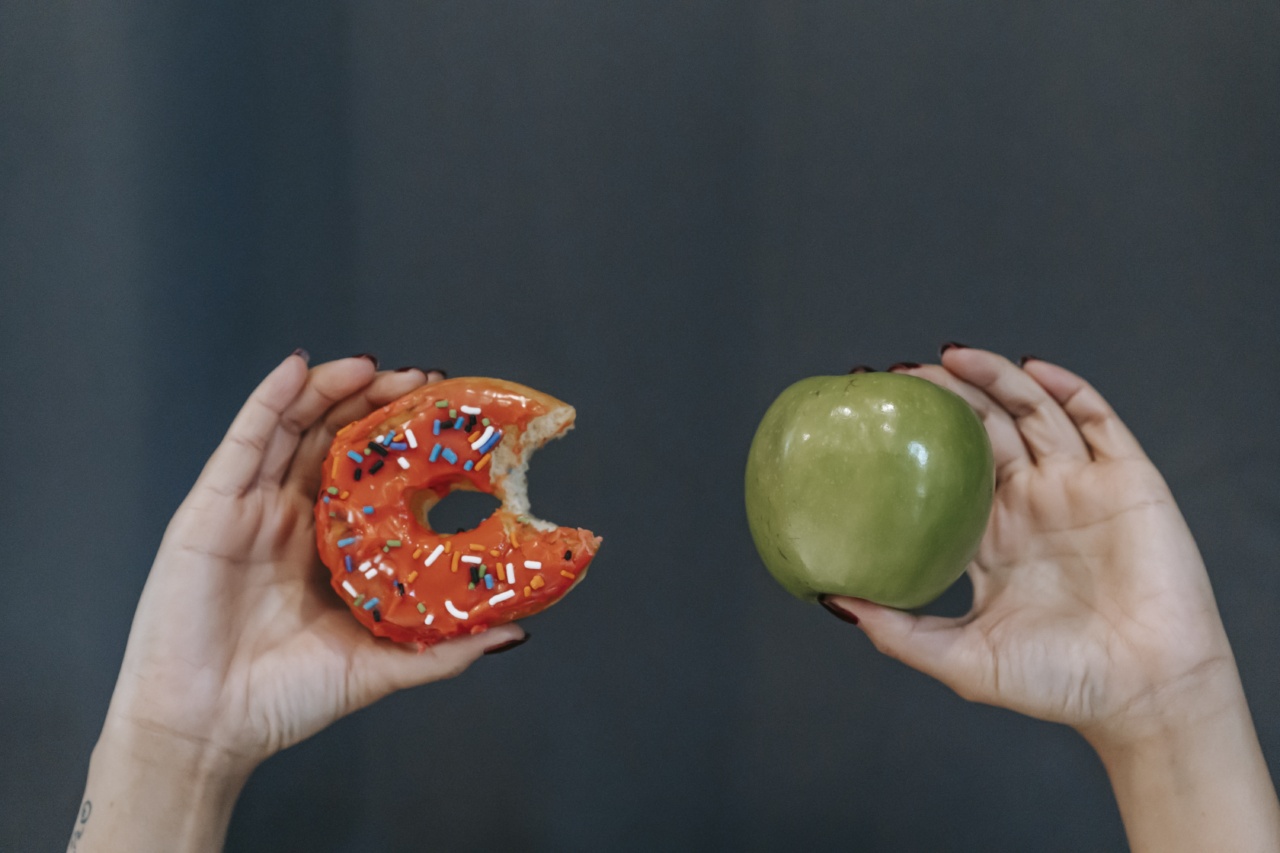Childhood obesity has become a growing concern in many parts of the world. The consumption of junk food has been identified as one of the primary contributing factors to this epidemic.
Despite the availability of healthier options, many children still opt for junk food. This article explores some of the reasons why some children choose to eat junk food over healthier alternatives.
The Power of Marketing
One of the main reasons why children choose junk food over healthier options is the incredibly powerful influence of marketing. Junk food companies invest heavily in advertising campaigns targeted directly at children.
They use captivating visuals, catchy jingles, and popular characters to entice children and create brand loyalty at a young age. These marketing strategies make junk food seem fun, desirable, and exciting. Healthier options, on the other hand, often have less aggressive advertising campaigns, leading to less awareness and appeal.
Peer Pressure and Social Acceptance
Children are highly influenced by their peers and want to fit in. When their friends or classmates are munching on chips, soda, and sugary snacks, it becomes difficult for them to resist the temptation.
Eating junk food might also be perceived as cool or socially acceptable, while choosing healthier options may result in teasing or exclusion from social groups. The fear of being judged and the desire to belong can drive children to opt for junk food over healthier choices.
Convenience and Accessibility
The convenience and accessibility of junk food also play a significant role in children’s choices.
Fast food restaurants, vending machines, and convenience stores are often found in close proximity to schools, parks, and other places children frequent. These establishments offer a wide variety of appealing junk food options that are easily accessible and quick to consume.
In contrast, healthier alternatives may require more effort, time, and preparation, making them less appealing to busy children and their parents.
Flavor and Texture Preference
Children tend to have a natural preference for sweet and salty flavors, which are often found in junk food. These flavors can be highly addictive and hard to resist.
Additionally, the texture of many junk foods, such as the crunchiness of chips or the creaminess of ice cream, can also be very appealing to children. Healthier options, while nutritious, may not always offer the same level of taste and texture satisfaction that junk food provides.
Emotional Comfort and Reward System
Junk food can serve as a source of emotional comfort for some children. Whether it’s a consolation after a bad day, a reward for good behavior, or a way to cope with stress or sadness, children often associate junk food with positive emotions.
This emotional attachment to unhealthy food can create a powerful and hard-to-break habit. Healthier options, on the other hand, may not have the same emotional significance for children and may not provide the same sense of comfort or reward.
Lack of Nutritional Education
Many children simply lack the necessary knowledge about nutrition and the long-term consequences of consuming excessive amounts of junk food.
Without proper education on the importance of a balanced diet and the negative effects of unhealthy eating habits, children are more likely to make impulsive decisions based on immediate gratification rather than long-term health benefits. A lack of nutritional education leaves children unaware of healthier options and their potential benefits.
Influence of Parents and Caregivers
The influence of parents and caregivers cannot be underestimated when it comes to a child’s food choices.
If parents regularly provide junk food and do not encourage healthier options, children are more likely to develop a preference for junk food. Additionally, busy and stressed parents may rely on fast food or packaged convenience meals as a quick and easy solution, inadvertently instilling poor eating habits in their children.
Positive role modeling by parents, along with encouragement and exposure to healthier options, can help shape children’s food preferences.
Food Deserts and Socioeconomic Factors
Food deserts, which refer to areas with limited access to fresh and affordable food, can significantly impact children’s food choices.
In lower-income neighborhoods, options for healthier food may be scarce, while fast food restaurants and convenience stores reign supreme. Limited access to nutritious options makes it difficult for parents to provide healthier meals for their children, leading to a higher reliance on junk food.
Socioeconomic factors play a crucial role in children’s food choices and can perpetuate unhealthy eating habits.
Personal Preference and Individual Taste
Lastly, personal preference and individual taste also play a role in children’s food choices. Just like adults, children have varying tastes and preferences when it comes to food.
Some children genuinely prefer the taste of junk food over healthier options, regardless of external factors. While it is essential to encourage healthier choices, respecting a child’s individual preferences can also foster a positive relationship with food and promote a more balanced approach to eating.
Conclusion
There are numerous reasons why some children choose to eat junk food over healthier options.
Marketing tactics, peer pressure, convenience, flavor preferences, emotional comfort, lack of education, parental influence, socioeconomic factors, and personal taste all contribute to this phenomenon. Addressing these factors requires a comprehensive approach involving education, supportive environments, accessible healthier options, and positive role modeling.
By understanding the underlying reasons behind children’s choices, we can work towards promoting a healthier future for the upcoming generations.






























